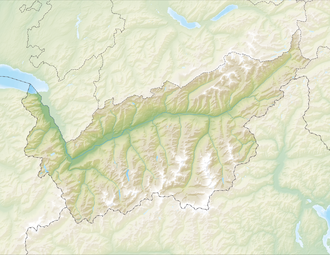| Lac de Louvie | |
|---|---|
 | |
| Location | Fionnay, Valais |
| Coordinates | 46°03′00″N7°18′30″E / 46.05000°N 7.30833°E |
| Basin countries | Switzerland |
| Surface area | 12 ha (30 acres) [1] |
| Surface elevation | 2,214 m (7,264 ft) [2] |
| Location | |
 | |
Lac de Louvie is a lake above Fionnay in the canton of Valais, Switzerland.
Contents

The Lac de Louvie is paradise for all nature lovers such as trail runners and hikers. It is situated at 2,213 metres (7,260 ft) above sea level and is a 2-hour walk from Fionnay.


